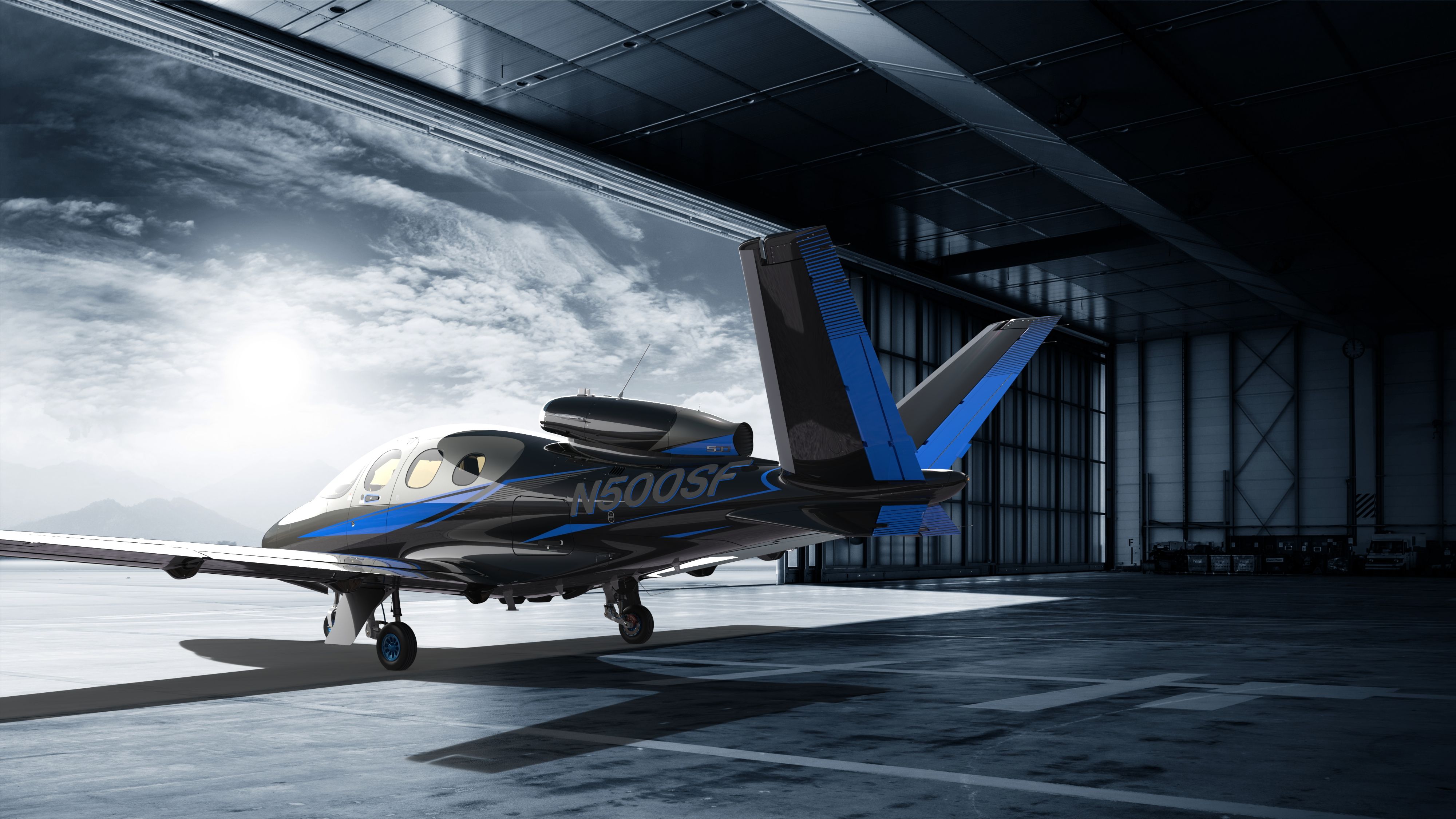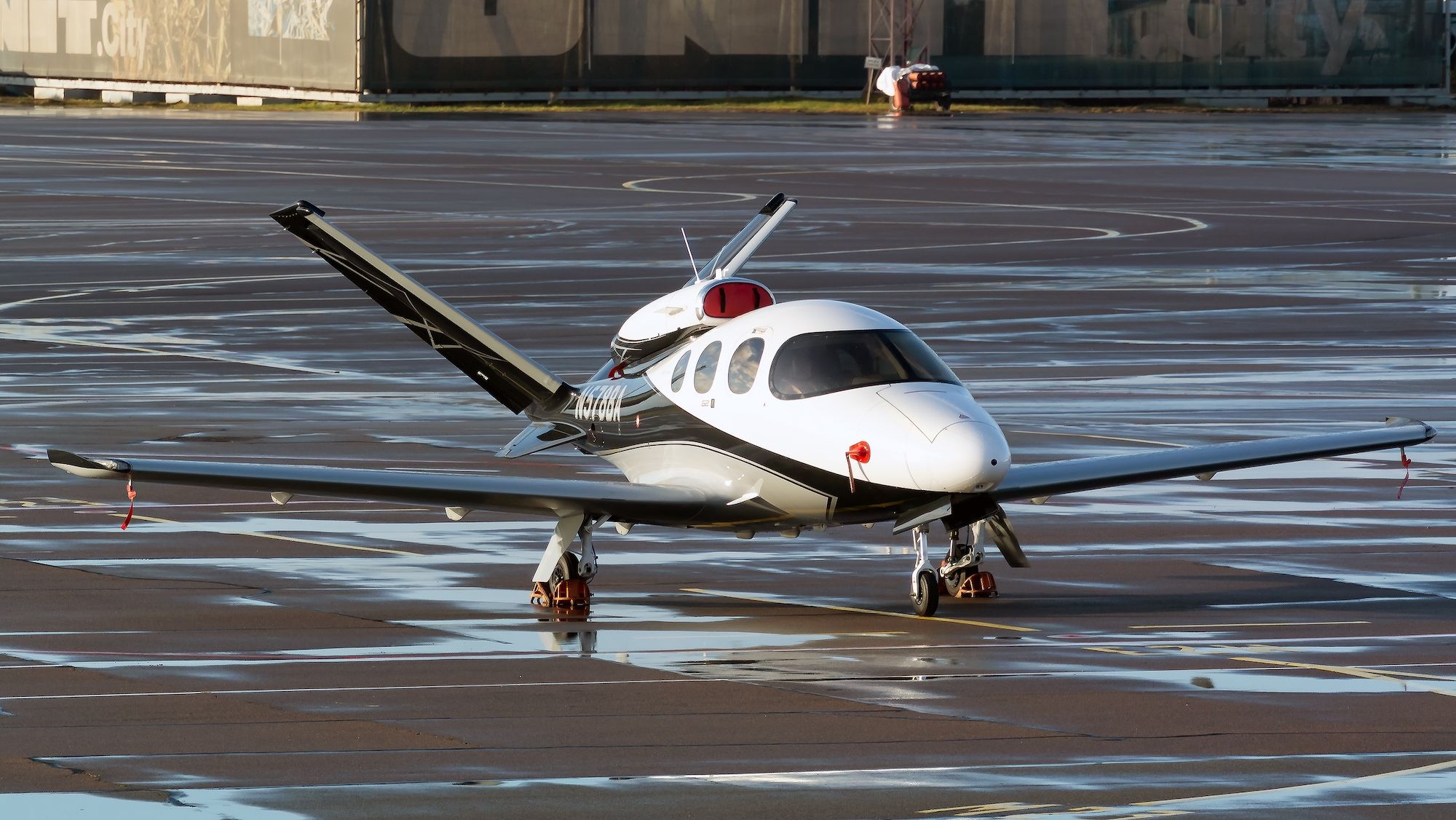Designed and produced by Minnesota-basedCirrusAircraft, the Cirrus Vision SF50 – otherwise more well-known as the Vision Jet, is a single-engine, very light aircraft first delivered in December 2016. Despite its relatively small size and lonesome aft-mounted turbofan engine, the aircraft became significantly popular, becoming the most-delivered business jet from 2018 through to last year.
But what makes the Vision Jet so highly popular among customers worldwide? Could a possible factor be its price tag? Presumably, a very light aircraft this small in size might be considerably cheaper than other business jets. Let’s take a look.
What’s so special about the Vision Jet?
With a minute wingspan of just 11.79 meters or around 38.7 feet,the Vision Jet ranks third worldwide on a list of aircraft with the shortest wingspan. The aircraft has an equally minute length of 9.42 meters or 30.7 feet to match, alongside a height of just 3.32 meters or 10.9 feet. Inside the carbon fiber fuselage cabin, with a width of approximately 1.56 meters or 5.1 feet and a height of 1.24 meters or 4.1 feet, up to seven passengers can still enjoy unexpectedly spacious head and shoulder room for ultimate comfort.
Concerning theperformance of this aircraft, the Vision Jet utilizes the Williams International FJ33-5A, which has been finely tuned to produce a thrust of around 1,846 pounds and a newly optimized thrust profile that provides added reassurance of up to 20% increased performance during take-off in hot temperatures and high elevations, making it ideal to access more airports at varied destinations across the globe.
With such a mighty powerful engine, the otherperformance specifications for this aircraftin normal operating conditions are as follows:
|
Take-off distance |
2,036 feet |
|
Maximum operating range |
1,275 nautical miles |
|
Maximum cruise speed |
305 knots |
|
Climb rate |
1,609 feet per minute |
Is the Vision Jet safe?
While this is all impressive for such a small aircraft, some might wonder if the only single-engined, very light aircraft ever to be certified by the Federal Aviation Administration is safe to fly. According to the manufacturer, its lack of incidents, and many happy customers worldwide, the answer seems to be a definite yes – and it’s primarily due to several different innovative technologies that Cirrus made sure to implement for enhanced safety features.
These include the combination of the Cirrus Airframe Parachute System (CAPS) and Safe Return feature that is exclusively available in the Vision Jet, an emergency autoland function that Cirrus developed in partnership with Garmin that gives the lone pilot the ability to land the aircraft in an emergency with the simple touch of a button. Another feature would be the Auto Radar, which Garmin powers through the aircraft’s Perspective Touch+ avionics.
As fancy as this feature sounds, it allows the pilot to select any desired radar range and automatically scans the ahead to display a composite, real-time depiction of the current weather. Compared to the usual image of the weather shown in cockpits, the Auto Radar system works to give clearer, 16-color palette imagery with automatic and improved ground-clutter suppression.
How much does the Vision Jet cost?
Suppose these advanced technologies weren’t enough for the average customer; Cirrus offers additional customizable safety enhancement packages that include features like Enhanced Vision, SurfaceWatch, and several more to suit any individual’s preference. The manufacturer also offers different packages for in-flight connectivity, cabin experiences, cabin luxury, and more.
Photo: Cirrus Aircraft
However, if a customer wishes to simply purchase the Vision Jet without the enhancement packages, a brand-new aircraft has an average listing price of approximately $3 million and up to $3.6 million with the inclusion of all the different packages. Although this price tag seems expensive, it makes the Vision Jet one of the cheapest in current markets and is quite the steal for a private jet with as many advanced technological enhancements.
And just like cars and every type of transport vehicle, an aircraft can also be sold even when pre-owned and after having previously clocked hours. In the case of a pre-owned Vision Jet, the average price listing for one that has between 160 to 680 flight hours can range from $2.3 to $2.8 million, although the lowest so far has been about $1.5 million. Once again, this makes the aircraft the cheapest, even in the pre-owned sales market.
Is it really that cheap?
Unfortunately, compared to other business jets, this small price tag does come with the same high operational and maintenance expenses. While various factors are involved when determining the costs of flying and maintaining a Vision Jet, such as volatile fuel prices, aircraft storage and maintenance, overhaul, insurance, crew salary, and the number of hours flown, the average annual cost for this aircraft is around $744,326.
That is, under the assumption that the Vision Jet flies and operates for an estimated 450 hours per annum. With an assumed $6 per gallon fuel cost, this means the aircraft has an assumed total variable cost of close to $397,000, an assumed total fixed cost of around $317,000, and an assumed annual budget of roughly $712,900. In short, operating the Vision Jet per hour would cost an estimated $1,585 per hour.
Photo: Rudzenka | Shutterstock
Although the numbers seem significantly high, when compared to the operating costs of otherbusiness jetsof a similar size and under the same 450 owner-operated hours and fuel price per gallon, the Vision Jet may be as frugal as it comes, as shown below:
|
Cessna Citation M2 |
HondaJet |
|
|
Average listing price |
$4.3 million |
$3.8 million |
|
Total variable costs |
$660,700 |
$583,000 |
|
Total fixed costs |
$505,000 |
$339,000 |
|
Annual budget |
$1.2 million |
$921,100 |
|
Operating cost per hour |
$2,600 |
$2,100 |
All in all, the Cirrus Vision Jet is truly a remarkable aircraft with the right innovative design and technologies that have revolutionized the very light aircraft industry. To top it all off, the type’s reliability and performance are better matched with a desirable and considerably affordable price tag, further emphasizing why the aircraft has been extremely popular for many years since it was first introduced.






